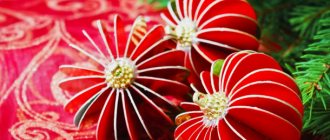How is incense produced?
Frankincense is an fragrant tree resin obtained from various plants, most often trees of the genus Boswellia. In February or March, small cuts are made in the trees, from which resin flows out over a long period of time. When it covers the tree trunk and begins to dry out, they begin to collect it.
The resin is ground into flour, water and aromatics are added. The mixture is then stirred until it reaches the consistency of dough, rolled out and formed into long strips, which are cut and dried. To prevent the pieces from sticking to each other, they are sprinkled with magnesia. Dried pieces of resin are incense. Previously, only natural resins were used in the production of incense, without aromatic additives.
Although there is no single classification of incense, three groups can be distinguished depending on the ingredients: incense made from natural resins with aromatic additives; pure natural resins, which serve as the basis for production, but can themselves be used for incense; mixtures of resins and herbs.
The main thing is boswellic acids
Frankincense is a mixture of essential oil, resins and resinoids.
It contains 27-35% polysaccharides (D-galactose, L-arabinose and galactose and D-galacturonic acid), 60-70% terpenes (predominantly free and bound boswellic acid), and 5-7% volatile essential oils. When analyzing the resin and essential oil, more than 80 components were identified. The chemical composition of incense includes about 30% gum, up to 56% resin, which is a mixture of free boswellic acid C32H52O4 and associated with olibanoresen (C15H22O)n, essential oil is about 8% (α-thuyene, p-cymene and other components) , there are also bitter substances, mineral substances. Standardization of boswellia resin products is carried out according to the content of triterpenoids - boswellic acids, derivatives of α- and β-boswellic acid, more than 10 compounds in total.
Standardized industrial boswellia resin extracts should contain between 30% and 65% total boswellic acids.
|
Flavored incense
Scented incense can be classified by place of production.
The most famous is the incense made in the monasteries, monasteries and cells of Athos.
What stands out here is “Vatopedi” incense , which is considered one of the highest quality. It has a deep, rich aroma, does not smoke, can be stored for a long time and its fragrance remains in the air for a long time after censing. For its production, high-quality aromatic oils are chosen. Conventionally, they can be divided into woody and floral groups, artificial and natural. For example, such aromas as Night Flower, Desert Flower, Flowers of Athos, Wild Rose, Cherubic, Violet, Walnut and Amber, partly Miro, Byzantium - combine several aromas at once and are attractive for this reason. Others - Rose, Lemon Flower, Cypress, Gardenia, Cinnamon - repeat the natural smell of plants.
On Athos, incense is also produced in the monasteries of Philotheus, Hilandar, the monasteries of the Great Martyr Demetrius, the Holy Righteous Anna, the cells of St. Nicholas, the Holy Apostle John the Theologian (Provata) and the Great Martyr Artemy (Provata) of the Great Lavra Monastery and others.
Each type is slightly different from the other, but the recipes are kept strictly secret; you can feel the differences only by burning the incense yourself.
The incense produced in the Stavrovouni Monastery in Cyprus is highly respected . A centuries-old tradition is carefully preserved here. Abbot Daniel wrote about the trees from which resin is collected to make incense back in the 13th century. Incense from Stavrovouni has a rich aroma.
Athenian incense. The next category is incense made in private workshops in Greece. These include such types as “Athensian”, “Patriarchal”, “Agios Afon”, “Mountain”, “Sketsky”, etc. Its main difference lies in the concentration and quality of the aroma used.
The uniqueness of Jerusalem incense lies in its appearance. It is not presented in the form of small pieces, but in the form of thin plates 3 millimeters thick and 10-15 centimeters in area.
Incense is also made in monasteries in Lebanon.
The production of incense has also been mastered in Russia. Masters use ancient technologies preserved and transmitted from Athos. For example, the “Athos” incense is created according to the recipes of the monks of the New Skete on Mount Athos, and the “Festive” incense is created with the blessing of the New Thebaid desert brotherhood of the Russian St. Panteleimon Monastery of Mount Athos. Frankincense is made from boswellia resin (olibanum) with the addition of high quality fragrant oils.
Frankincense of Athos
Incense "Eucharist"
Incense "Festive"
Incense "Eden"
From the history
The Old Testament Book of Exodus gives a recipe for incense - a complex composition that God commanded to be burned in the temple during worship. It also includes incense (Ex. 30:34–36). Frankincense was also one of the sacrificial offerings (see for example Jer. 17:25–26).
While the incense
in Old Testament times it was allowed to be used exclusively for sacred rites; incense resin was also used in everyday life - to aromatize the air or as a perfume, as mentioned in the Song of Solomon.
In ancient pagan cultures, incense was also used. In particular, archaeologists discovered sealed vessels with incense, including incense, in the tomb of Tutankhamun. It is amazing that incense, which was many thousands of years old, continued to smell fragrant.
Fragrant incense was very expensive in the ancient world. Caravans with it made long and risky journeys and brought considerable profit to their owners.
Frankincense was also among the gifts brought by the Magi to the Infant God: “... and having opened their treasures, they brought Him gifts: gold, frankincense and myrrh
"(Matt. 2:11). This gift symbolized that Christ is both the High Priest, sacrificing himself to the Creator, and God, accepting this Sacrifice. (In turn, the other two gifts indicated that Christ was the King of heaven and earth (gold) and the Man Who was to die.)
Natural resins
Natural resins in their natural form can also be used as incense, without the addition of aromatic oils: cedar of Lebanon, cypress, myrrh, dammar, but mainly boswellia resin (olibanum). It gives off a smoky, tart, sweet, slightly oily aroma.
Boswellia grows in a number of countries - Yemen, Oman, Somalia, Sudan, Eritrea and Ethiopia. Shades in aromas may differ depending on the place of origin, growing conditions of the tree, purity and time of collection. In order to appreciate the aromas, you will have to smoke the resin to notice the difference.
Incense "Boswellia resin - olibanum"
At the forefront of aromatherapy
Aromatherapists use not only frankincense resin, but also essential oil, which is a dense yellowish liquid with a resinous balsamic aroma. It is obtained by steam distillation from incense.
Since ancient times, incense has been used in religious ceremonies. It was believed that it promotes immersion in prayer and detachment from worldly problems, that it is the aroma of meditation and immersion in the inner world. A person feels peace and tranquility.
According to modern aromatherapists, incense has antiseptic, warming, hemostatic and relaxing properties. Used for immunodeficiency and depression, asthma, colds, and flu. The aroma of incense normalizes sleep and helps eliminate mild depression. Sometimes it is added to products for aging, fading and wrinkled skin. To achieve this, conventional cosmetic preparations are enriched with frankincense oil. When applied to the skin, a burning and tingling sensation appears, which goes away after 1-2 minutes.
Photo: Rita Brilliantova
How to choose incense?
When choosing incense, you need to rely on your own feelings and preferences. Each species has several subspecies that differ from each other depending on the combination of aromas. For example, “Vatopedi” incense has as many as 15 varieties. In order to make the right choice, it is best to try burning incense yourself and “listen” to the smell.
It is also necessary to remember that the price of incense is determined by the quality and naturalness of the ingredients. The cheapest incense cannot have all the properties and depth of smell of an expensive one.
You can get acquainted with all the variety of varieties, aromas and packaging of incense in the Orthodox Word store, where the largest assortment of incense and natural resins in Russia is presented.
Findings of pharmacologists
Frankincense is used in perfumery and aromatherapy. For medical purposes, incense is used in homeopathy, in the manufacture of some plasters, toothpastes, elixirs, smoking candles and papers, etc.
Interestingly, due to the fact that Indian frankincense (from Boswellia serrata) is used in Ayurveda, most of the clinical studies have been conducted with this species.
The anti-inflammatory properties of frankincense resin extracts were first studied in animal experiments in 1971, where the extracts were reported to have “analgesic and sedative effects.” Recent pharmacological studies (2000) have shown that the anti-inflammatory effect of incense is associated with the content of boswellic acids. In this case, the activity is similar to the effect of non-steroidal anti-inflammatory drugs. Boswellia inhibits the action of pro-inflammatory mediators, especially leukoprienes, through inhibition of 5-lipoxygenase, a key enzyme in the biosynthesis of leukotrienes. Unlike other anti-inflammatory drugs, which are known to interfere with glycosaminoglycan synthesis, contributing to joint diseases, boswellic acids show the opposite effect - they reduce the degradation of glycosaminoglycans. This means that long-term use of boswellic acids does not cause irritation or stomach ulcers. Protective, antimicrobial and immunostimulating effects were found.
According to preliminary data published from scientific studies conducted in India, acetyl-11-keto-beta-boswellic acid, compared with other derivatives of the sum of boswellic acids, showed the highest inhibitory activity on 5-lipoxygenase.
In England, they analyzed all the information about Boswellia studies in medical journals and identified only those that were carried out in compliance with all methods and do not raise doubts about their reliability. Studies related to diseases such as asthma, rheumatoid arthritis, Crohn's disease, osteoarthritis and collagenous colitis were included. The results of all trials showed that Boswellia serrata extracts were clinically effective. No serious side effects were noted.
Research has also shown that boswellic acids suppress inflammation, including in chronic inflammatory conditions such as arthritis. They suppress the production of inflammatory mediators.
As a result of a 6-week study at the University Hospital of Tübingen, it was found that in patients aged 17 to 75 years, when taking Boswellia resin preparations, there was a general improvement in their condition (disappearance of shortness of breath, reduction in the number of attacks), as well as a decrease in eosinophils and ESR. Asthmatic diseases are characterized by chronic inflammatory disease of the airways. The mechanism of the anti-inflammatory action of boswellic acids reduces the body's increased response to the inflammatory process, alleviating the symptoms of the disease. The standard dosage of frankincense tree resin extract for the treatment of inflammatory diseases and in the case of bronchial spasms was about 300 mg three times a day.
At the Technical University Clinic of Dresden (Germany), the effect of Boswellia preparations on symptoms, quality of life and histology in patients with collagenous colitis was studied. It was found that use at a dose of 400 mg for 6 weeks showed a beneficial effect on histology (colonoscopy) and the general condition of large organs.
A study of 30 patients in India with osteoarthritis of the molar joint noted a decrease in pain and inflammation, and improved joint mobility.
Studies have not found any toxic reactions or side effects with clinical use of Boswellia resin extracts.
Beneficial features
Cistus, a plant from which life-giving liquid is extracted, is listed in the Red Book as an almost exterminated plant and a rarity among the flora of the planet.
In its original form, resin is a very expensive and almost unavailable product. More and more often it is now made using coniferous trees - cedar, spruce and others. This does not prevent incense from remaining the owner of a large number of beneficial properties:
- Excellent in treating joint disease, rheumatism, arthritis;
- Helps fight colds;
- Has a beneficial effect on the skin, eliminating various rashes and inflammations;
- Used to treat urinary tract diseases;
- Helps strengthen the immune system;
- Successfully fights diseases of the gastrointestinal tract, disorders, ulcerative manifestations;
- Has a positive effect on the nervous system, calms;
- It has a good effect on the functioning of the brain in general. Added to some memory enhancing medications;
- Has antiseptic properties;
- In some cases it serves as an expectorant;
- It is even found in cooking, as an aromatic additive to some drinks.
Taking into account the huge list of incense’s abilities, it is actively used as an indispensable component of some preventive, medicinal and cosmetic products:
- tinctures,
- ointments,
- cosmetical tools.
Its aroma continues to be appreciated widely. Experts even subjected it to study, and in terms of its effect, they equated the substance used in fumigating premises to narcotic drugs, explaining this by the incredible energy charge that occurs in the body when inhaling the fumes.
The charge is so strong that a person begins to experience increased vigor, nervous tension is dulled, until complete peace. A person relaxes under the tide of a wave of pleasant sensations.
Excessive inhalation of smoldering resin can even lead to euphoria. The effect will be maximum if the process is accompanied by a small amount of alcohol. In this, experts see the danger of miraculous crystals. In addition, it turned out that their combustion products can cause an allergic reaction. It can be very difficult: with suffocation, dizziness and even memory loss.











